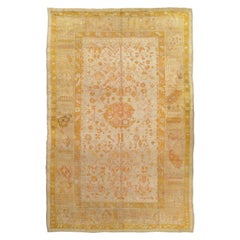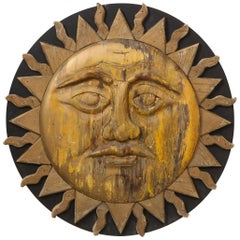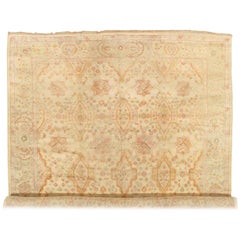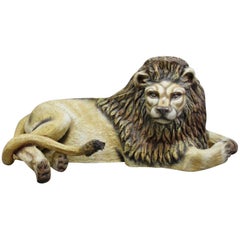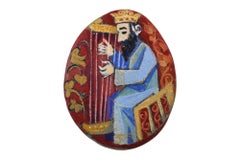Tri-State Area - Folk Art
Late 19th Century Turkish Oushak Antique Tri-State Area - Folk Art
Wool
Mid-20th Century American Folk Art Tri-State Area - Folk Art
Wood
19th Century Turkish Oushak Antique Tri-State Area - Folk Art
Wool
Late 20th Century Mexican Folk Art Tri-State Area - Folk Art
Paper
1940s American Folk Art Vintage Tri-State Area - Folk Art
Mahogany, Wood
Mid-20th Century American Folk Art Tri-State Area - Folk Art
Stone
19th Century Togolese Primitive Antique Tri-State Area - Folk Art
Wood
Late 20th Century French Tri-State Area - Folk Art
Wood
Late 19th Century Persian Serapi Antique Tri-State Area - Folk Art
Wool
19th Century French Empire Antique Tri-State Area - Folk Art
Marble
1930s American Folk Art Vintage Tri-State Area - Folk Art
Iron
Mid-19th Century Brazilian Folk Art Antique Tri-State Area - Folk Art
Silver
Early 20th Century American Folk Art Tri-State Area - Folk Art
Wool
15th Century and Earlier North African Prehistoric Antique Tri-State Area - Folk Art
Marble
1920s African Primitive Vintage Tri-State Area - Folk Art
Bronze
1950s American Industrial Vintage Tri-State Area - Folk Art
Metal
20th Century Mid-Century Modern Tri-State Area - Folk Art
Canvas, Wood
1930s American Folk Art Vintage Tri-State Area - Folk Art
Cotton, Wood, Paint
Mid-20th Century Scandinavian Tri-State Area - Folk Art
Wool
Early 20th Century Persian Oushak Tri-State Area - Folk Art
Wool
Late 18th Century Italian Folk Art Antique Tri-State Area - Folk Art
Wood
Late 20th Century American Folk Art Tri-State Area - Folk Art
Metal
Early 20th Century Scandinavian Folk Art Tri-State Area - Folk Art
Wood
20th Century Italian Modern Tri-State Area - Folk Art
Paint
Late 19th Century Russian Kazak Antique Tri-State Area - Folk Art
Wool
1920s Primitive Vintage Tri-State Area - Folk Art
Metal, Iron
21st Century and Contemporary Turkish Folk Art Tri-State Area - Folk Art
Wool, Hemp
21st Century and Contemporary Italian Tri-State Area - Folk Art
Driftwood
20th Century Gabonese Tri-State Area - Folk Art
Wood
Late 19th Century Turkish Oushak Antique Tri-State Area - Folk Art
Wool
1890s Indonesian Tribal Antique Tri-State Area - Folk Art
Wood
20th Century American Modern Tri-State Area - Folk Art
Metal
Late 19th Century Persian Heriz Serapi Antique Tri-State Area - Folk Art
Wool
Early 20th Century Persian Tabriz Tri-State Area - Folk Art
Wool
Early 20th Century Persian Heriz Serapi Tri-State Area - Folk Art
Wool
1920s Moroccan Tribal Vintage Tri-State Area - Folk Art
Stone
2010s Indian Tri-State Area - Folk Art
Crystal
20th Century Hollywood Regency Tri-State Area - Folk Art
Bronze
1950s Italian Mid-Century Modern Vintage Tri-State Area - Folk Art
Gold
Early 20th Century American Folk Art Tri-State Area - Folk Art
Wood
Late 19th Century Persian Sultanabad Antique Tri-State Area - Folk Art
Wool
Early 20th Century Turkish Oushak Tri-State Area - Folk Art
Wool
Late 19th Century Persian Heriz Serapi Antique Tri-State Area - Folk Art
Wool
1930s German Vintage Tri-State Area - Folk Art
Metal
Early 20th Century Turkish Oushak Tri-State Area - Folk Art
Wool
Mid-20th Century Brutalist Tri-State Area - Folk Art
Metal
1970s Danish Scandinavian Modern Vintage Tri-State Area - Folk Art
Ceramic, Porcelain
Early 20th Century Persian Tri-State Area - Folk Art
Wool
Late 20th Century Tri-State Area - Folk Art
Fruitwood
Early 20th Century Tri-State Area - Folk Art
Wood
Late 19th Century Turkish Oushak Antique Tri-State Area - Folk Art
Wool
Mid-20th Century American Folk Art Tri-State Area - Folk Art
Wood
20th Century Tri-State Area - Folk Art
Wood
15th Century and Earlier Danish Primitive Antique Tri-State Area - Folk Art
Stone, Metal
Mid-20th Century Tri-State Area - Folk Art
Stone
Early 20th Century Turkish Oushak Tri-State Area - Folk Art
Wool
1960s Vintage Tri-State Area - Folk Art
Iron
18th Century Swedish Folk Art Antique Tri-State Area - Folk Art
Iron
Early 20th Century Persian Sultanabad Tri-State Area - Folk Art
Wool
19th Century Antique Tri-State Area - Folk Art
Wood, Leather, Hide
Read More
A Giant Wedding Cake Has Us Looking at Portuguese Tiles in a New Light
At Waddesdon Manor, artist Joana Vasconcelos has installed a three-tiered patisserie inspired by the narrative tile work of her homeland. We take a look at the cake sculpture and how Portuguese tiles have been used in architecture from the 17th century to today.
Why Jules Chéret Was the King of the Modern Poster
The streets of fin-de-siècle Paris were set aglow with colorful poster ads, thanks to the printing techniques invented by Jules Chéret. Now, the Milwaukee Art Museum is celebrating this undersung talent in America's first solo show dedicated his exuberant works.
Why the American Flag Has Had So Many Different Star Patterns
Expert Jeff Bridgman explains the history and meaning behind the twinkling constellations that have graced Old Glory.
Peggy Guggenheim Loved Modernism, but She Also Collected Tribal Art
The iconoclastic style setter displayed African and Oceanic art, as well as works by indigenous peoples of the Americas, alongside pieces by such major modernists as Pablo Picasso and Jackson Pollock.
The 13-Star American Flag Had More Variations Than You’d Think
Perfect for July 4th weekend, a new show at Philadelphia's Museum of the American Revolution displays an array of antique red, white and blue flags.
Tramp Art, America’s Most Misunderstood Art Form, Is Trending in Interiors
Designers are beginning to see this enigmatic form of folk art in a whole new light.
